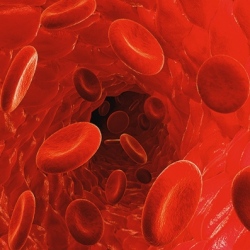
As scientists work to unlock the mysteries of why some 80-year-olds must live in nursing homes while others play tennis every week, researchers report they have found the beginnings of what may be the first therapeutic treatment for frailty, a common condition of aging that can lead to falls and other adverse effects.
An early stage clinical trial conducted in Miami found that elderly patients breathed easier and walked longer distances after receiving a single infusion of stem cells from young and healthy donors, according to two studies published this week in the Journals of Gerontology.
Stem cells have the capability of becoming specialized cells that can repair tissue damage.
“Every human being on the planet is aging,” said Dr. Joshua Hare, founding director of UM’s stem cell institute. “What isn’t understood so well is some people are aging successfully and some people are aging poorly.”
Hare said there’s a biological difference that causes some people to become frail in their old age while others retain mobility and energy, and he believes it has to do with chronic inflammation in the body and the withering of cells and muscle tissue.
But medicine and society have largely accepted frailty as inevitable, Hare said.
“It’s easy to draw a conclusion that, ‘Oh, well, this is going to happen anyway, and some people are luckier than others,’ ” he said.
Early findings from Hare’s clinical trials may challenge those assumptions.
The first phase of Hare’s study, which involved 15 people, showed that stem cell infusions were safe for patients. A second phase, which included 30 people, found that those who received a single stem cell infusion treatment showed improved lung function and an ability to walk farther than the group that received a placebo.
“People got better early,” Hare said, “and the improvement was sustained over time.”
The average age of those participating in the clinical trials was 78, Hare said, and those who received stem cell infusions intravenously showed physical improvement at three and six months after the therapy.
For the next phase of the clinical trial, Hare said, he will recruit about 120 people. But before that, Hare said, researchers are working to establish measurable goals in collaboration with the Food and Drug Administration, which would give the final approval for the therapy to be used broadly.
Walking distance is one of the measurable goals, and researchers already reported that elderly subjects in the clinical trials were able to walk 60 to 70 meters farther during a six-minute period after receiving the infusions.
Another measure would be to reduce inflammation biomarkers that can be found in the blood.
If the third phase of the clinical trial can show that stem cell infusions reduce those biomarkers for inflammation, Hare said, the therapy is more likely to win FDA approval.
Hare said the third phase of the clinical trial will be funded by Longeveron, a Miami company that he founded in 2014, and that has licensed the technology for the stem cell infusion therapy. The first two phases of the clinical trial were sponsored by UM.
“You need a commercial entity to do this,” Hare said. “It’s very difficult for a university to take on that level of responsibility.”
Longeveron will manufacture the stem cell infusion therapy and distribute it if the FDA approves the drug for human use, said Hare, who disclosed his ownership stake in the company as conflict of interest in the Journals of Gerontology.
Academic researchers with financial interests in the drugs they are studying is fairly common, said William Allen, a medical ethicist with the University of Florida’s College of Medicine.
“It doesn’t mean that there’s no potential for problems,” Allen said. “But lots of places do this. It’s about disclosure and how you manage the conflict.”
